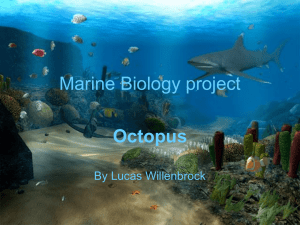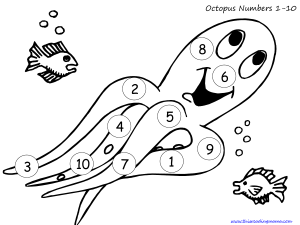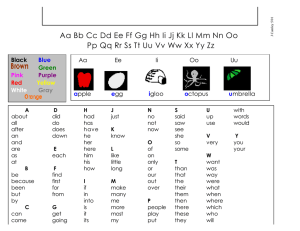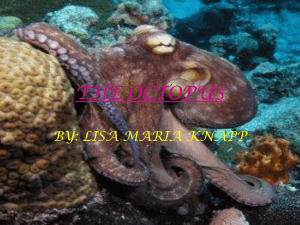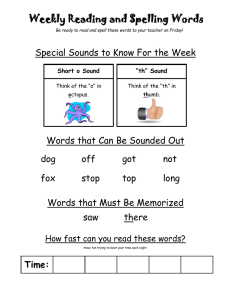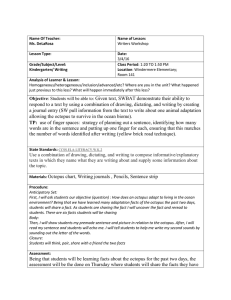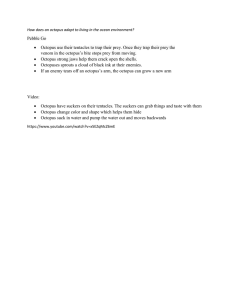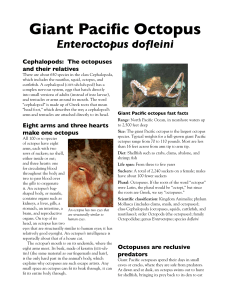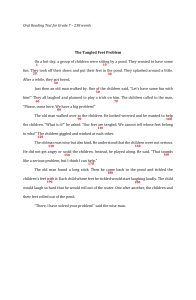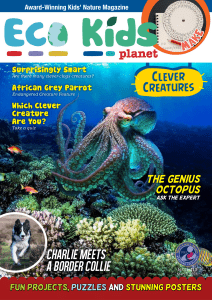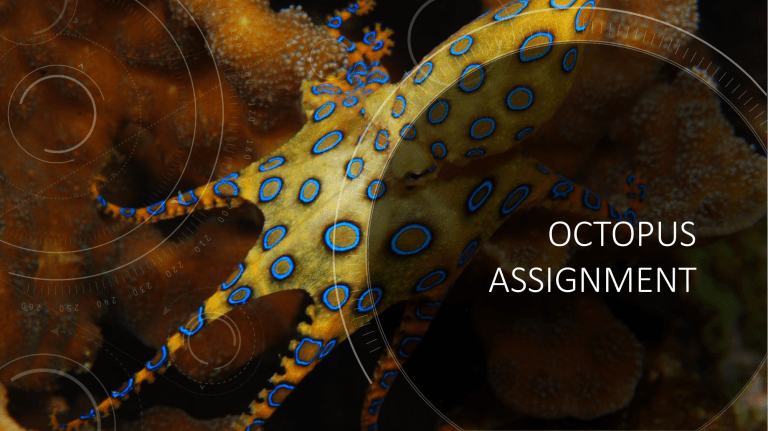
OCTOPUS ASSIGNMENT SENSORY SYSTEM • Octopuses, cuttlefish, squid and snails belong to a class of marine mollusks called cephalopods, along with now extinct creatures called ammonites and belemnites • A common octopus has about 500 million neurons in its body • Their eyes are very different compared to human eyes. They can see colour because of the shape of pupils. Whereas humans can see colour due to the cones in the retina. TRANSPORT SYSTEM • Octopuses have three hearts. The main heart is the systemic heart. The other two hearts are called brachial hearts • The two brachial hearts of the octopus pump blood from the veins through to the gill capillaries • The circulatory circuit sends oxygenated blood from the gills to the atrium of the systemic heart, then to the ventricle which pumps the oxygenated blood to the rest of the body. HOW DO THEY MAKE BABIES ? • The male has a mating arm which he uses to put sperm inside the female’s mantle cavity . • The female octopus can lay up till 10,000 eggs • She will cuddle and clean the eggs all day for the 53 months it takes for the eggs to hatch. Then she will die. HOW DO THEY MOVE AROUND? • They move around by using jet propulsion. They will suck water into a muscular sac in the mantle cavity that surrounds their bodies • As octopuses have no bones, they are able to fit in extremely small spaces, like in this plexiglass wonderland created by National Geographic. HOW DO THEY EAT AND DIGEST FOOD? Octopus use all eight of their tentacles to find and eat their food. Octopuses eat many kinds of sea creatures. They prey on crabs, crayfish, and mollusks. They also eat shrimp and small fish. Most of the tearing and cutting is done by the beak. The beak is so tough and strong that is can drill through the shell if the animal has one.
